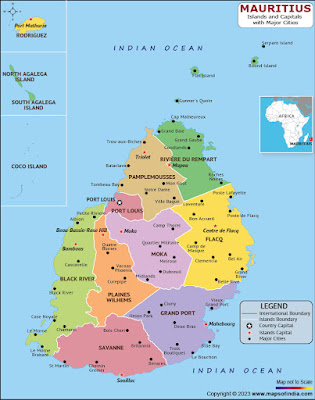Mauritius, a tropical paradise in the Indian Ocean, is known for its turquoise lagoons, white-sand beaches, lush mountains, and multicultural charm. This island nation offers travelers luxurious relaxation, adventure activities, vibrant markets, and a warm Creole spirit that makes every visit unforgettable.
Discover Mauritius
📍 Location: Situated in the Indian Ocean, east of Madagascar.
🌊 Stunning Beaches: Crystal-clear waters, coral reefs, and powdery sands.
⛰️ Volcanic Landscapes: Lush mountains, waterfalls, and scenic hiking trails.
🏝️ Island Charm: Colorful markets, colonial architecture, and Creole culture.
Top Places to Visit in Mauritius
🏖️ Grand Baie: A lively coastal village known for its beaches, nightlife, and water sports.
🏝️ Île aux Cerfs: A small island with pristine beaches and clear waters for snorkeling.
🏞️ Black River Gorges National Park: Hiking trails, waterfalls, and native wildlife.
🌈 Chamarel: Home to the Seven Colored Earths, a natural geological formation, and Chamarel Waterfall.
🏞️ Le Morne Brabant: A UNESCO World Heritage Site, this mountain offers stunning views and a glimpse into the island’s history.
🌿 Pamplemousses Botanical Garden: Known for its giant water lilies and diverse plant species.
Culture and Traditions
✨ Multicultural Harmony: A mix of Indian, African, Chinese, and European influences reflected in festivals and daily life.
✨ Festivals: Celebrate Diwali, Chinese New Year, and Cavadee with local communities.
✨ Music and Dance: Sega music, performed with drums and traditional dance, is integral to Mauritian culture.
✨ Warm Hospitality: Mauritians are known for their friendly and welcoming nature.
Mauritian Cuisine
🍛 Dholl Puri: A popular street food made of flatbread filled with ground split peas.
🥘 Seafood Curries: Freshly prepared with local spices and coconut milk.
🍍 Tropical Fruits: Pineapples, lychees, and mangoes are abundant.
🥗 Rougaille: A Creole tomato-based sauce served with fish or meat.
🍹 Fresh Juices and Rum: Locally made rum and sugarcane juices are must-try beverages.
Why Visit Mauritius?
✅ Stunning Beaches: Ideal for relaxation, snorkeling, and water sports.
✅ Natural Beauty: Lush forests, waterfalls, and volcanic landscapes.
✅ Diving and Marine Life: Vibrant coral reefs with diverse marine species.
✅ Cultural Experiences: Experience Creole culture and diverse traditions.
✅ Luxury and Adventure: Offers both world-class resorts and outdoor adventures.
Practical Travel Tips
🛂 Visa: Many nationalities can enter visa-free or get visa-on-arrival.
🌤️ Best Time to Visit: May to December for dry and cooler weather.
🗣️ Language: English is the official language, with French and Creole widely spoken.
👗 Dress Comfortably: Light clothing for the tropical climate; modest attire for visiting temples.
Final Thoughts 🌍✨
Mauritius is a true paradise where you can unwind on pristine beaches, hike through lush trails, dive into clear waters, and immerse yourself in a vibrant, multicultural society. Whether you seek a romantic getaway, family vacation, or solo adventure, Mauritius welcomes you with its warmth, beauty, and tropical charm.
✈️ Curious about Africa’s 54 unique countries?
Explore them all on our Africa Main Page.
🏠 For more art, travel, and cultural stories, visit our CRA ARTS Main Page.
Would you love to relax on Mauritius’ stunning beaches or explore its colorful markets? Share your thoughts or questions below!

Comments
Post a Comment